What Two Weeks At Altitude Did for My Cycling Performance
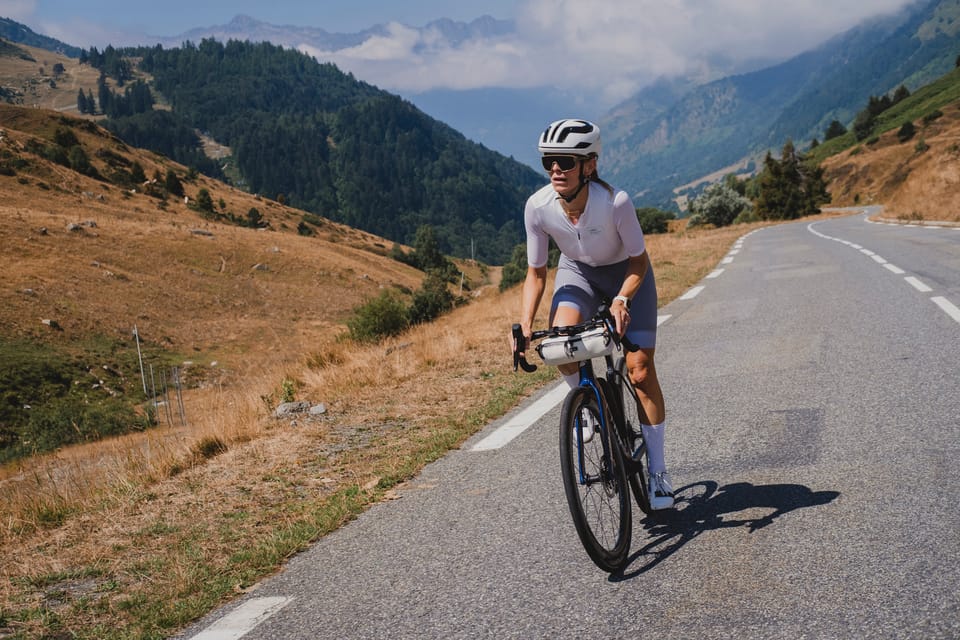
What Two Weeks in the Pyrenees Did for My Cycling Performance
We spent the last two weeks in the French and Catalan Pyrenees, and on the drive home, I realised we might have just done a mini altitude camp without really planning it. I have always been fascinated by professional cyclists who spend weeks high in the mountains to maximise their performance. So, I decided to write down what it did for myself, a very mortal rider.
Sea-Level Feels Like Flying
After we came back to more or less sea level, the first long ride felt incredible. My legs turned over more easily, no fatigue in the usual spots, and I could visibly put more power through the pedals. I am not sure if it was the extra oxygen, just a good day on the bike, or a mix of both, but the difference was noticeable. Not only during the ride but also during recovery afterwards.
VO2 Max at Altitude and Back
When we first arrived in the mountains, my VO2 max reading on my Garmin watch dropped by a couple of points. That is to be expected - every 1000 m above sea level can cause VO2 max to fall by 8–11 percent because there is less oxygen available in the air. The air still has the same 21 percent oxygen, but the lower pressure means fewer molecules make it into your lungs and blood.
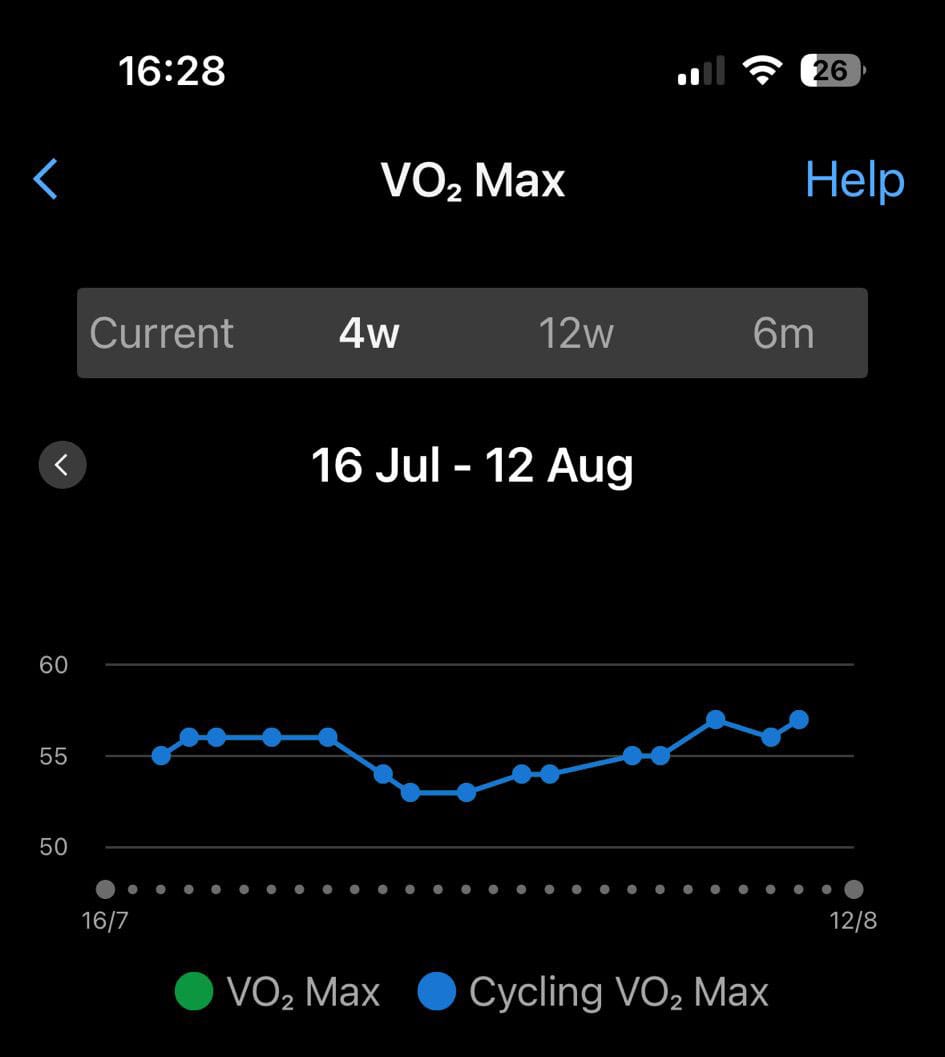
After coming back home, my VO2 max returned to its previous level, which is my highest value so far, though not higher than before the trip. It is worth noting that my VO2 max measurement comes from ride data on a watch, not from lab testing, so daily fluctuations are larger and should be taken as estimates rather than absolutes.
Based on data, VO2max is the most notable improvement you should expect after a proper altitude training. In our case, we may have missed on extending our mountain stay for another week or sleeping at higher altitude, more consistently.
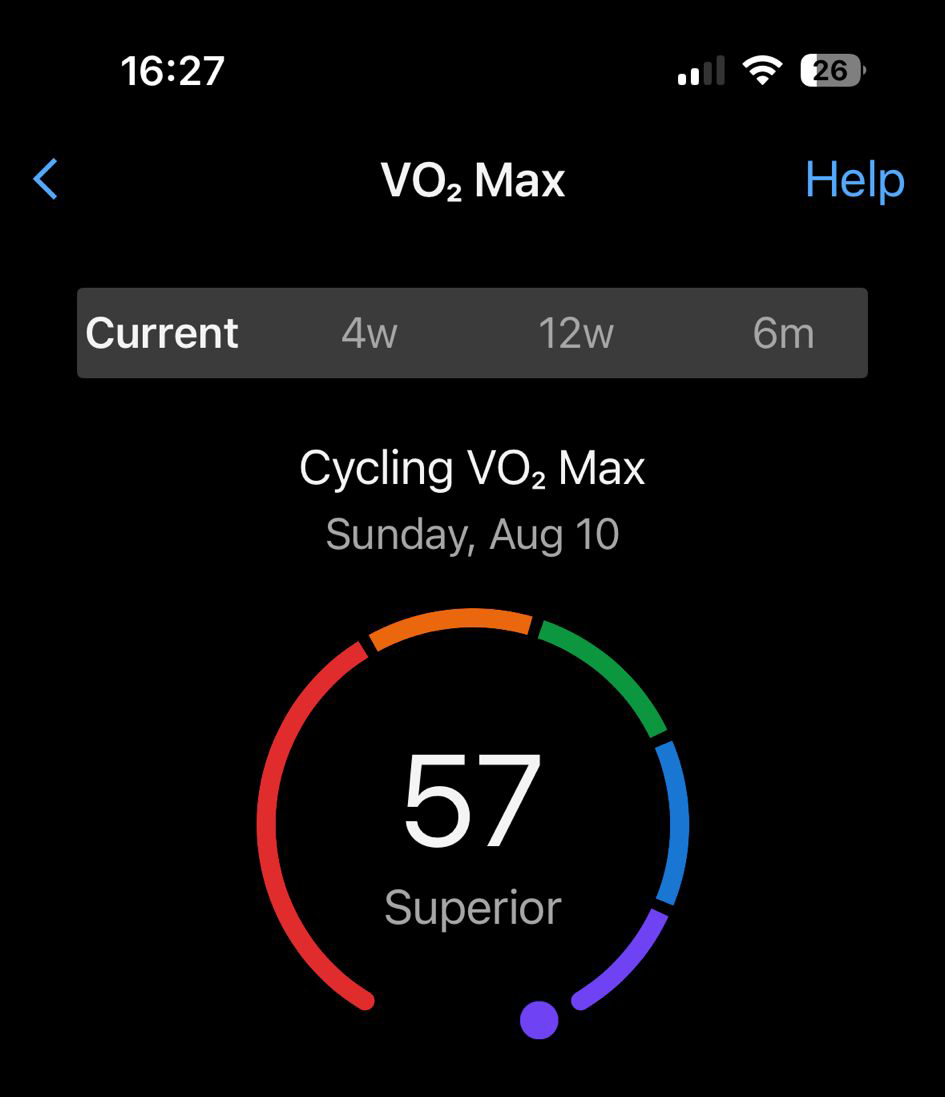
FTP Improvement After Altitude
I retested my FTP back at home and it had gone up by about 12 watts. Alongside that, I was 2.5 kg lighter. It is often said that losing weight and gaining power at the same time is difficult. In my case, I think altitude exposure, good nutrition and a solid block of structured training played a role in that improvement.
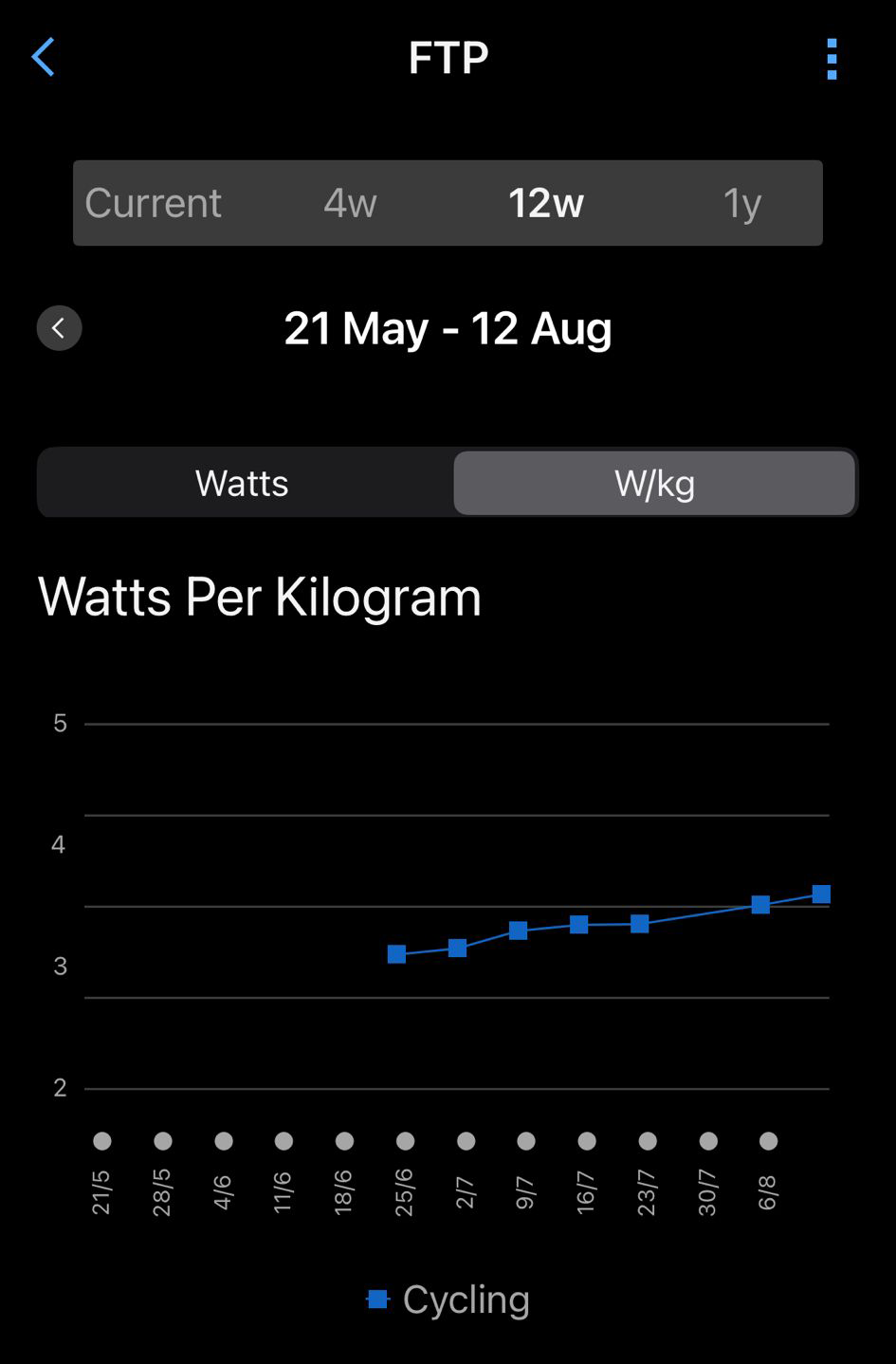
Weight Loss and Nutrition Changes
Both Julian and I have been using The Atheletes Foodcoach app to fuel our training better. As a result, we dropped some fat reserves while still feeling strong on the bike. One of the biggest takeaways for me was realising how much I needed to fuel pre-ride and during long rides. Sometimes I could not believe how much I had to eat to replace the calories burned on a big day.
Interestingly, this approach stopped me from feeling starved after hard sessions, which meant I was not overeating later in the day. Research supports this - fueling well during rides not only helps with performance but also improves recovery and reduces cravings. In the professional world, it is very common that weight loss and power improvement can go hand in hand.
Why would I even want to lose weight? After listening to The Road Map Podcast with David, a World Tour nutritionist, who claimed that even Cat 1 and amateur athletes who training over 8 to 10 to12 hours a week, often carry 3 - 7 kg extra than they should. This certainly felt close to home and sparked my curiosity. Together with my recent struggles to eat enough before rides, I decided to do a little experiment give a food app a go. I tried both Hexis and the The Athletes FoodCoach app but preferred Foodcoach.
Why Altitude Training Works
Science says improvements in altitude are not surprising. Spending time at high in the mountains (ideally around 2000–2500 m) prompts your body to produce more red blood cells and haemoglobin, which improves oxygen transport. Studies show VO2 max can increase by around 6 percent after three weeks of exposure. That boost can last up to three or four weeks after returning to sea level, giving you a short-term performance edge.
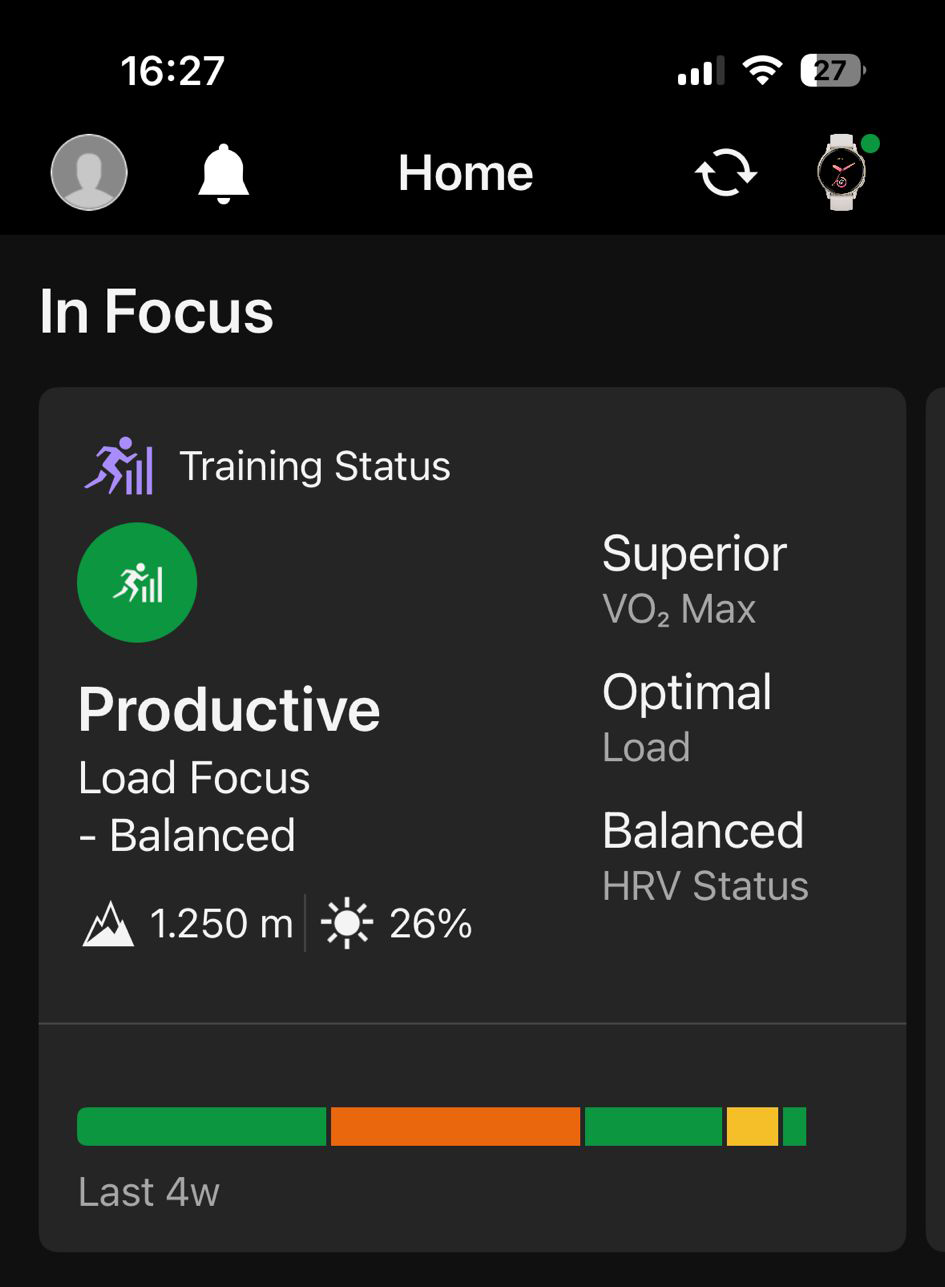
From a physiological perspective, altitude training works by:
- Increasing red blood cell count and haemoglobin mass for better oxygen delivery.
- Improving muscle efficiency when oxygen is limited.
- Forcing your body to adapt to reduced oxygen, so returning to sea level feels easier.
- The "live-high, train-low" method: living at altitude but doing harder efforts at lower elevations, is considered the most effective for both endurance and power gains, as it allows you to maintain training intensity while still getting the altitude adaptations.
Our Imperfect Mini Altitude Camp in Numbers
To put things in perspective, our mini-camp consisted of:
- Most nights sleeping between 1500 - 2000 m (better in 2000 - 2500 m)
- Riding mostly in altitude of 1000 - 2200 m (better riding closer to sea level)
- Around two week trip, probably over 10 days in altitude (this is ideally over 3 weeks)
- A lot of climbing, including 6-7 climbs over 20 km each
The Most Important Data Point
If you have the opportunity to explore the benefits of altitude for cycling, there is solid science behind it. But as our two weeks showed, even an unplanned and imperfect mountain block can leave you feeling stronger, supercharged, and more in love with the ride. All numbers aside, mountains make me happy and peaceful – that is feeling like no other. If you feel the same, I highly recommend you give it a go and make a nice trip.

Member discussion